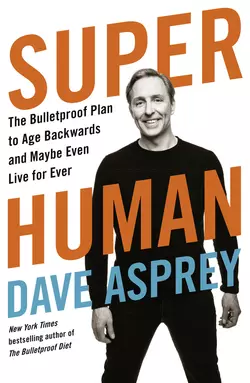Super Human: The Bulletproof Plan to Age Backward and Maybe Even Live Forever

Дэйв Эспри
Тип: электронная книга
Жанр: Спорт, фитнес
Язык: на английском языке
Стоимость: 1536.11 ₽
Статус: В продаже
Издательство: HarperCollins
Дата публикации: 16.04.2024
Отзывы: Пока нет Добавить отзыв
О книге: From the creator of Bulletproof coffee and the bestselling author of Head Strong and The Bulletproof Diet comes a plan to bypass plateaus and ‘up’ your game at every age. Dave Asprey suffered countless symptoms of ageing as a young man, which sparked a lifelong burning desire to grow younger with each birthday. For more than twenty years, he has been on a quest to find innovative, science-backed methods to upgrade human biology and redefine the limits of the mind, body, and spirit. The results speak for themselves. Now in his forties, Dave is smarter, happier, and more fit and successful than ever before. In Super Human, he shows how this is level of health and performance possible for all of us. While we assume we will peak in middle age and then decline, Asprey’s research reveals there is another way. It is possible to make changes on the sub-cellular level to dramatically extend life span. And the tools to live longer also give you more energy and brainpower right now. The answers lie in Dave’s Seven Pillars of Ageing that contribute to degeneration and disease while diminishing your performance in the moment. Using simple interventions – like diet, sleep, light, exercise, and little-known but powerful hacks from ozone therapy to proper jaw alignment, you can decelerate cellular ageing and supercharge your body’s ability to heal and rejuvenate. A self-proclaimed human guinea pig, Asprey arms readers with practical advice to maximize their lives at every age with his signature mix of science-geek wonder, candour, and enthusiasm. Getting older no longer has to mean decline. Now it’s an opportunity to become Super Human.